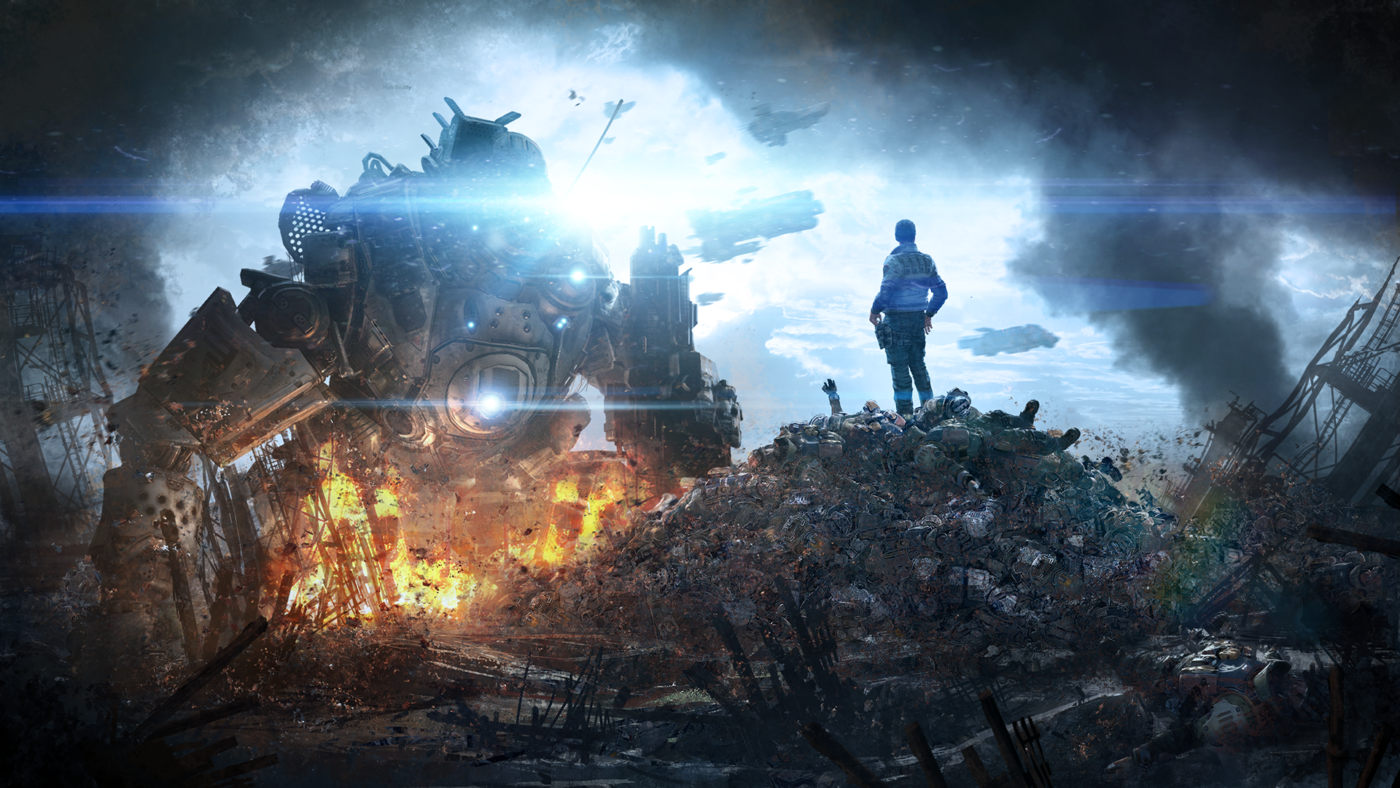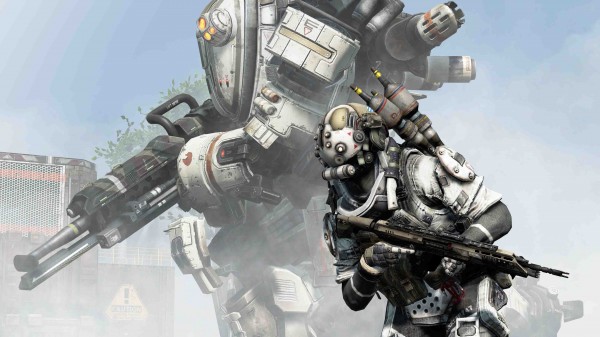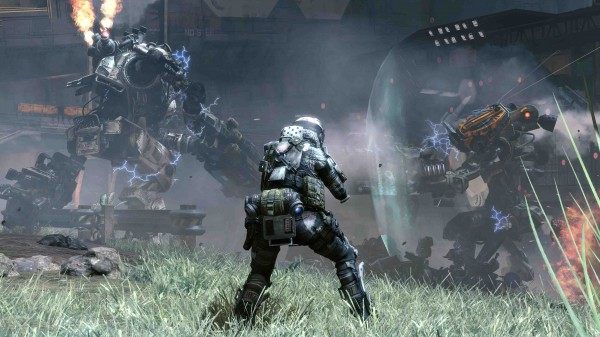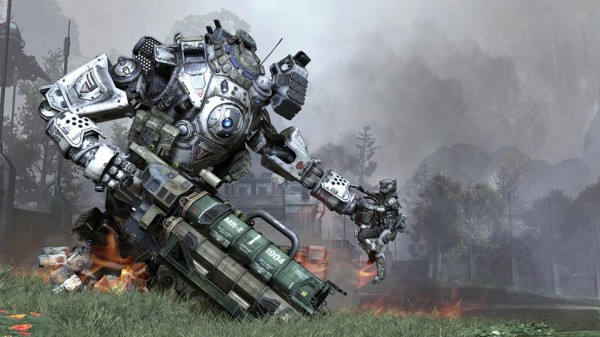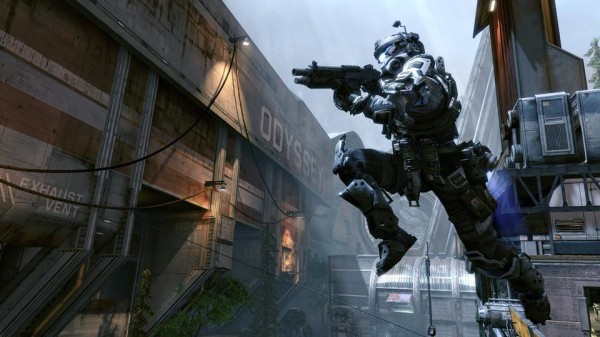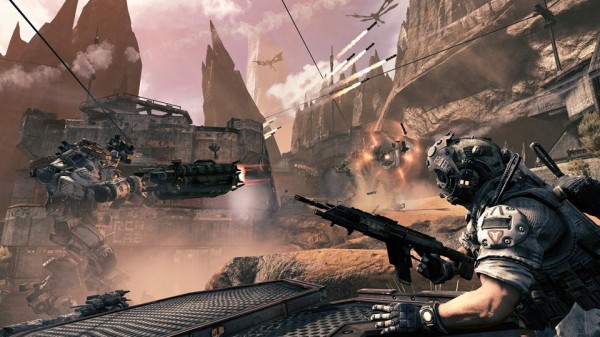When studio heads Vince Zampella and Jason West left Infinity Ward with more than forty members of their distinguished team after a dispute with Call of Duty publisher Activision, there was one question on everyone’s mind: What’s coming next from the developers of arguably the most successful first-person shooter franchise in gaming history?
That question was answered at E3 2013 by the newly formed studio Respawn Entertainment who unveiled its first IP, the sci-fi, mech-inspired shooter, Titanfall. Since then, the Titanfall hype train has been going non-stop and grew to a peak when around 2 million unique players played the beta alone. But now that gamers are no longer ‘standing by for Titanfall’, does it live up to that hype?
The Multiplayer Campaign
While Titanfall doesn’t come with a single player story mode – a surprise choice for a triple-A shooter – it does sport a rather cinematic multiplayer campaign that mixes Titanfall’s classic modes of Hardpoint Domination and Attrition with story-related voice overs and short scripted intro-sequences.
To put it simply, the campaign was great overall. It makes you feel like you are a part of something bigger and that you’re not just the ‘one man army’ depicted in most modern shooter campaigns. But the lack of story-driven details makes it feel a tad rushed, as many of the key moments during missions go unnoticed as players scramble to grasp their bearings or get lost in the action. Another issue is the lack of unique objective game modes during the story. Because of this, Pilots appear as common infantry, while key characters go off to do their own thing with AI Grunts.
That aside, it was nice to play through a campaign that actually gives the players the control to determine who wins and who loses, outlining the basis of team play in a fast-paced action shooter. The absolute best thing about the campaign, however, is the ability to play as both the IMC and Militia factions and their sides of the story, which allows for a compelling new perspective of the same adventure. Still, given the standard $60 price tag, I would have liked to see Respawn take the extra step with the campaign to make it really make it stand out from the rest of Titanfall’s multiplayer-only experiences.
Maps & Game Modes
Respawn is not afraid of letting players drop into new locations with their own story to tell, and with 15 maps to play on, it’s hard to get bored of all the impressive and highly detailed scenery when you hardly ever revisit the same arena twice in a gaming marathon. What makes the maps of Titanfall even better is the lack of one-sided advantage points you might see in other games, making for heart-pounding matches that test players’ ability to make their own luck. Not only that, but Respawn has successfully crafted 15 different maps that are almost completely unique from one another. They don’t suffer from the carbon copy effect, which could ultimately grow stale rather quickly. But one feature – or lack thereof – that can make for a more monotonous experience is Titanfall’s lack of game modes.
Titanfall ships with five modes; Attrition, Hardpoint Domination, Capture The Flag, Pilot Hunter, and Last Titan Standing. All of them are a variation of classic game modes you’d see in any other modern day shooter, and that brings Respawn’s first IP down in the sense that it has the potential to introduce more unique objective modes, especially ones based on the campaign. But don’t let this be the defacto turn off from the game. Each mode has its own charming Titanfall twist to it that fits nicely within the game’s universe, especially Pilot Hunter and Last Titan Standing. All that aside, it’s the gameplay that really counts, and that’s where Titanfall shines the brightest.
Gameplay
Respawn has concocted a healthy melting pot of both innovative and recognizable game design when it comes to the way gamers play Titanfall, especially in how Pilots and Titans maneuver through the environments. Despite such size differences between the two forces, the balance between them remarkably fair. It’s David and Goliath in video game form. Be it an anti-titan weapon or a daring rodeo ride atop a Titan’s head, Pilots won’t have any more trouble taking out Titans than Titans will have squishing, punching, or blasting Pilots with out-of-this-world sci-fi weaponry. Titans are protected through regenerative shielding that can either be breached via overwhelming firepower or through a more direct approach like rodeoing.
As you might notice rather quickly, AI plays a great role in Titanfall’s core gameplay formula. They might not be the most challenging foes you’ll face, as Pilots are far more dangerous, but they do serve a purpose. That is to mainly keep the action rolling in Titanfall’s larger maps, knock off the time it takes to call in a Titan, or to help newcomers contribute to a win in game modes like Attrition where points are scored for eliminating Grunts and Spectres. Titanfall’s AI also governs your Titan, should you choose to set it to Auto-Titan mode, as opposed to directly controlling it through the cockpit. Truly competitive players may or may not end up ignoring AI opponents all together, but thus far, they serve to improve Titanfall’s gameplay and Respawn’s vision of epic battles, rather than hinder it.
In Titanfall, classic video game idioms like jet packs, double jumping, wall running and giant robots are introduced as exotic new elements in a first-person game. I also really appreciate that players are tasked with learning how to take advantage of these new maneuvering tactics for themselves, all without hand-holding tutorials, save for the intro training mode. Clever pathways traversable only by wall running aren’t always spelled out for the player. Experimentation is key. While the game may be a “pick-up and play” sort of shooter, there is a shrouded skill gap that is prominent in players who have adapted to some of these overlooked features. Quick learners will be far more more agile, harder to hit, and will also acquire a better sense of awareness in all situations.
Clearly, maneuverablitiy plays a key role in how Titanfall differentiates itself from other shooters, which is why it can be frustrating to see it go over the heads (literally) of average players. Most seem to want to stick to tried-and-true “run-‘n’-gun” tactics, instead of adopting new play styles. This is also what kills objective modes like Hardpoint Domination and Capture The Flag, as they are treated more like Team Deathmath. Protip: you actually move much faster and jump way further by wall-running, so keep that in mind.
In Titanfall, Respawn has successfully freed the player from the restraints placed on most gamers in traditional shooters and, man, does it ever feel good to be in such control.
Weapons, Progression, & Burn Cards
“Less is more” is the motto that best describes the weapons and unlocks in Titanfall. There isn’t a whole lot there, but each weapon, ordinance, tactical ability, and kit selection plays an important role and offers some advantage or disadvantage that another item doesn’t. There is something for every type of player in any kind of situation, including three different types of Titan that either favor armor, speed, or balance. So, don’t be disappointed that Respawn didn’t include a Battlefield 4-amount of weapons, because they instead offer one of the most balanced games since Call of Duty: Modern Warfare.
But with the “less is more” approach, a problem arises. How does Respawn spice the game up after having unlocked everything? The answer is their own updated variation of Call of Duty’s ‘Prestige’ mode called ‘Generations’. Here, players are able to reset everything they’ve unlocked once they’ve hit rank 50. This, in turn, allows them to “regenerate” which grants them an experience boost, as well as the opportunity to re-do all challenges. Eventually, players are tasked with completing certain challenges to keep moving through Generations, instead of just grinding away through matches. But challenges aren’t just for Generations, they’re for everything, and their reward makes for some interesting advantages.
Weapons, progression, generations, Titans – just about every element comes with a serving of challenges. Some are easy, some are hard. But it isn’t the challenges that make Titanfall so fun and eccentric, it’s the Burn Cards you get for completing them. 50 Burn Cards in total are obtainable that give players various in-game abilities, three of which you are able to carry into any given match. The catch is that you only get to use one per life. Once you die, that card is gone until you unlock it again. While you’ll need to use them wisely, don’t be too cautious, as you’ll be earning a lot throughout your play time. Burn Cards range from double experience gained in one life, to being disguised as an AI Spectre, to making a bigger boom with your Nuclear Eject.
Visuals, Sounds, & Immersion
While Titanfall’s visuals might not not be the most stellar out there, there’s certainly something to be said about the game’s immersive sound design that adds to a very believable experience, despite some of the fantastical sci-fi elements. Amongst the chilling robotic noises of gigantic Titans storming the battlefield – reminiscent of Michael Bay’s Transformers movies – and the booming sound effects of Titanfall’s space-age weaponry, there are plenty humanistic moments heard through voice-over lines delivered by random AI grunts. You’ll find plenty of details that will undoubtedly wow you, both visually an aurally.
It’s too bad that the occasional screen tearing and frame rate drop can take you out of the experience every so often, but these instances are forgivable and infrequent. As we’ve heard, it sounds like performance is a top priority among the team at Respawn, so expect improvements in the near future. It also helps that Titanfall’s networking top notch. Pings are solid and lag is minimal.
4.5 / 5
Titanfall may suffer from story driven details and a lack of unique game modes, but it more than makes up for it with diverse maps, an astonishingly fun multiplayer gameplay experience that rewards players regardless of skill level, and an offering that is an overall breath of fresh air in the first-person shooter genre. Though it was a risky move charging $60 for a multiplayer-only title, it’s hard not to appreciate the studio’s focused vision of what a good multiplayer shooter should be. In the end, I think it paid off. Respawn’s masterpiece surpasses expectations and might as well keep rolling until the sequel arrives.
What’s your take on Titanfall?
This review was based on the Xbox One version of Titanfall, courtesy of EA.
